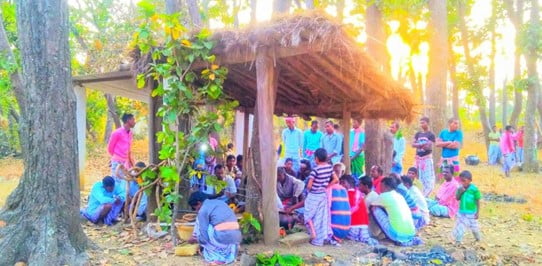Geography
In News: As demands for a Sarna religious code in Census 2021 grow in Jharkhand, many outfits are busy trying to convince the tribal people that they are Hindus.
- In November 2020, the Jharkhand government convened a special Assembly session to pass a resolution to recognise Sarna religion and include it as a separate code in the Census of 2021.
The Sarna Religion
- The followers of Sarna faith believe pray to nature.
- The holy grail of the faith is “Jal (water), Jungle (forest), Zameen (land)” and its followers pray to the trees and hills while believing in protecting the forest areas.
- Jharkhand has 32 tribal groups of which eight are from Particularly Vulnerable Tribal Groups.
- While many follow Hindu religion, some have converted to Christianity — this has become one of the planks of demanding a separate code “to save religious identity”— as various tribal organisations put it.
Why need Sarna Code?
- It is believed that 50 lakhs tribal in the entire country put their religion as ‘Sarna’ in the 2011 census, although it was not a code.
- Thus it is important to recognize them.

Politics around the code
- Many of the tribals who follow this faith have later converted to Christianity—the state has more than 4% Christians most of whom are tribals.
- Some who still follow the Sarna faith believe the converted tribals are taking the benefits of reservation as a minority.
- They also believe that benefits should be given specifically to them and not those who have converted.
What sense does a separate code make?
- The protection of their language and history is an important aspect of tribals.
- Between 1871 and 1951, the tribals had a different code. However, it was changed around 1961-62.
- Experts argue that when today the entire world is focusing on reducing pollution and protecting the environment, it is prudent that Sarna becomes a religious code as the soul of this religion is to protect nature and the environment.
Source: The Hindu
Previous Year Question
Q.1) Consider the following statements about Particularly Vulnerable Tribal Groups (PVTGs) in India: (2019)
- PVTGs reside in 18 States and one Union Territory.
- A stagnant or declining population is one of the criteria for determining PVTG status.
- There are 95 PVTGs officially notified in the country so far.
- Irular and Konda Reddi tribes are included in the list of PVTGs.
Which of the statements given above are correct?
- 1, 2 and 3
- 2, 3 and 4
- 1, 2 and 4
- 1, 3 and 4













